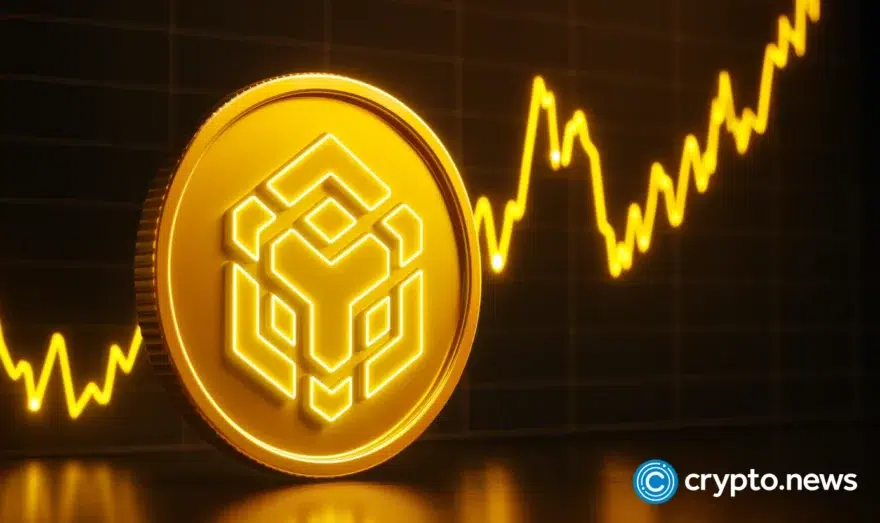Bitcoin’s October magic: Is “Uptober” making a comeback?

Could Bitcoin’s historic “Uptober” returns repeat themselves this year, especially after its best September performance ever, or are we set for a new twist in Bitcoin’s price action?
Table of Contents
October brings back hopes
As October rolls around, the Bitcoin (BTC) community is buzzing with excitement. Historically, this has been Bitcoin’s favourite time to shine, and the buzzword ‘Uptober’ is making a comeback.
But let’s rewind a bit and talk about September. Traditionally, it’s been a rough month for Bitcoin, with prices often taking a hit. In fact, from 2017 to 2022, every September ended in the red for Bitcoin. For years, it was consistently one of the worst-performing months for BTC.
However, 2024 had other plans. Instead of stumbling, Bitcoin surged! For the first time in years, September ended with a 9.3% return — its best performance since Bitcoin’s inception, according to Coinglass data.
To put this in perspective, BTC only managed a 3.91% gain in September last year. As of Sep. 30, Bitcoin is trading at $64,600, having climbed about 2% in the past week.
A lot of this momentum comes from recent moves by the U.S. Federal Reserve. On Sep. 18, the Fed cut interest rates by 50 basis points, giving the market a solid boost.
Now, October has always been a standout month for Bitcoin, with an average return of 22.9%. With BTC already showing strength as we leave September behind, what could be next for Bitcoin?
Factors driving Bitcoin’s October outlook
As we head into October, several key factors seem to be aligning for Bitcoin, setting the stage for a potentially bullish month. Let’s break them down one by one.
Post-halving effect
Bitcoin’s fourth halving event occurred in April 2024, slashing mining rewards in half from 6.25 BTC per block to 3.125 BTC.
Historically, this supply reduction has often sparked bullish price movements, although not immediately. Bitcoin tends to follow a post-halving pattern, swinging between highs and lows before building key momentum.
Interestingly, research suggests that Bitcoin’s price cycles typically start gaining traction around 170 days after a halving, peaking roughly 480 days later.
With October marking about 170 days since the most recent halving, many are speculating that this could be the start of a major upward movement for BTC.
What makes this even more intriguing is the fact that the final quarter of the year, especially during halving cycles, has historically been bullish. For example, in Q4 of 2012, Bitcoin surged 97.7%, Q4 of 2016 saw gains of 58.4%, and Q4 of 2020 delivered an astonishing 168.9% rally.
If history is any indicator, Q4 of 2024 could follow this pattern, with October potentially setting the stage for a strong rally.
Election heat
The 2024 U.S. election race is adding fuel to Bitcoin’s fire, with both major candidates stepping into the crypto conversation.
Former President Donald Trump, once a crypto sceptic, has made a critical pivot. Earlier this year, in May, he began accepting crypto donations for his campaign — a move that immediately caught the crypto community’s attention.
In June, Trump further reinforced his pro-crypto stance by voicing support for Bitcoin miners, expressing hope that the remaining Bitcoin supply would be mined domestically.
He didn’t stop there. At the end of July, Trump made headlines by attending the Bitcoin Conference in Nashville as the main guest, where he proposed creating a national strategic reserve of Bitcoin.
And, to cap things off, on September 16, Trump launched his own decentralized finance project called “World Liberty Financial,” solidifying his deepening involvement in the crypto space.
On the other side, Vice President Kamala Harris has also started courting the crypto community, although with more caution. After a long period of silence, she’s finally making statements that show she’s warming up to the sector.
In a recent speech in Pittsburgh, Harris highlighted the importance of maintaining U.S. dominance in blockchain technology, a critical backbone of the crypto ecosystem.
Her campaign followed up by releasing a policy document that promised to “encourage innovative technologies like AI and digital assets,” signalling a nod toward the importance of cryptocurrencies like Bitcoin.
With both major candidates now dipping their toes into the crypto waters, the political landscape seems to be shaping up favourably for Bitcoin, especially as election season heats up.
Stable macroeconomic environment
The macroeconomic environment is also playing a key role in Bitcoin’s outlook for October. Despite some mixed signals, there’s reason to remain optimistic.
The U.S. economy added 142,000 jobs in August, slightly more than in July, which has boosted market confidence. However, job revisions from previous months suggest the labour market might not be as strong as it initially appeared.
Inflation, another critical factor, seems to be cooling—at least on the surface. In August, the Consumer Price Index (CPI) hit its lowest level since February 2021, landing at 2.5% on a 12-month basis, just below the expected 2.6%.
However, core inflation, which excludes volatile items like food and energy, remains stubbornly high, coming in at 0.3% for August, which was higher than anticipated.
As a result, the Federal Reserve made a historic move on September 18, cutting interest rates by 50 basis points, bringing them down to a range of 4.75-5%. This has injected fresh liquidity into the financial system.
Meanwhile, on the global stage, China has taken steps to stimulate its economy. On Sep. 27, Chinese equities surged to their best week since 2008, thanks to a stimulus package rolled out by Beijing.
The People’s Bank of China announced an 800 billion yuan ($114 billion) lending pool to support local companies and non-bank financial institutions. This influx of capital has lifted investor confidence worldwide, creating a more stable backdrop for risk assets like Bitcoin.
However, not everything is smooth sailing on the geopolitical front. Tensions continue to escalate in the Middle East, particularly as the Israel-Palestine conflict nears the one-year mark.
Rising friction between Israel and regional nations, including the potential threat from Iran-backed Hezbollah, could introduce uncertainty into global markets.
While Bitcoin is often seen as a hedge against traditional financial volatility, any stark geopolitical event could dampen the ongoing bullish sentiment, complicating what has otherwise been a favourable setup for BTC.
What do experts think?
As Bitcoin enters October, many crypto experts and macro analysts are weighing in on what could unfold in the coming days.
One of the main themes analysts are focusing on is the surge in global liquidity, which is a key driver for Bitcoin. Julien Bittel, Head of Macro Research at Global Macro Investor, notes that global money supply (M2) has begun to rise again, a historically positive sign for Bitcoin.
He suggests that Bitcoin tends to react quickly to such liquidity injections, and given the current macro environment, we may be nearing what he calls a “last-chance saloon to go long before The Banana Zone really kicks in.”
However, it’s important to remember that while liquidity is bullish for Bitcoin, geopolitical tensions in the Middle East and the possibility of unexpected economic shocks—like those seen during COVID—could disrupt this momentum.
Another notable crypto analyst, Michaël van de Poppe, has set an extremely bullish target for Bitcoin. He predicts that by the end of 2024, Bitcoin could trade between $90,000 and $100,000.
Like Bittel, van de Poppe cites the growing global liquidity as a major factor. With gold and silver prices climbing to multi-year highs, Bitcoin — often called “digital gold” — is expected to follow suit.
However, according to The Kobeissi Letter, U.S. consumers are becoming increasingly pessimistic about the economic outlook. In fact, Americans’ confidence in current economic conditions has fallen to its lowest level since 2020, mirroring the levels seen during the 2008 Financial Crisis.
Historically, whenever the gap between consumers’ current assessment and future expectations exceeds 30 points, a recession has typically followed, with 2003 being the only exception.
At present, we’re at that critical 30+ point mark again. This means that while Bitcoin may be gearing up for a bull run, the wider economy could be on the verge of a recession.
If a recession does hit, it could have mixed implications for Bitcoin.
On one hand, Bitcoin is often seen as a safe-haven asset during economic uncertainty, which could boost demand. On the other hand, a severe economic downturn might reduce risk appetite among investors, potentially limiting Bitcoin’s upside.
The road ahead
As Bitcoin charges into October with bullish momentum, the stage seems set for potential gains. However, it’s crucial to tread carefully.
While rising global liquidity and the post-halving cycle suggest strong upside potential, risks still loom. Geopolitical tensions, coupled with the possibility of a U.S. recession, remain key challenges.
It’s always wise to remember that the crypto market is highly volatile. Although the future looks promising, Bitcoin’s path may be rocky. As always, never invest more than you can afford to lose, and proceed with caution in these uncertain times.
Disclosure: This article does not represent investment advice. The content and materials featured on this page are for educational purposes only.















